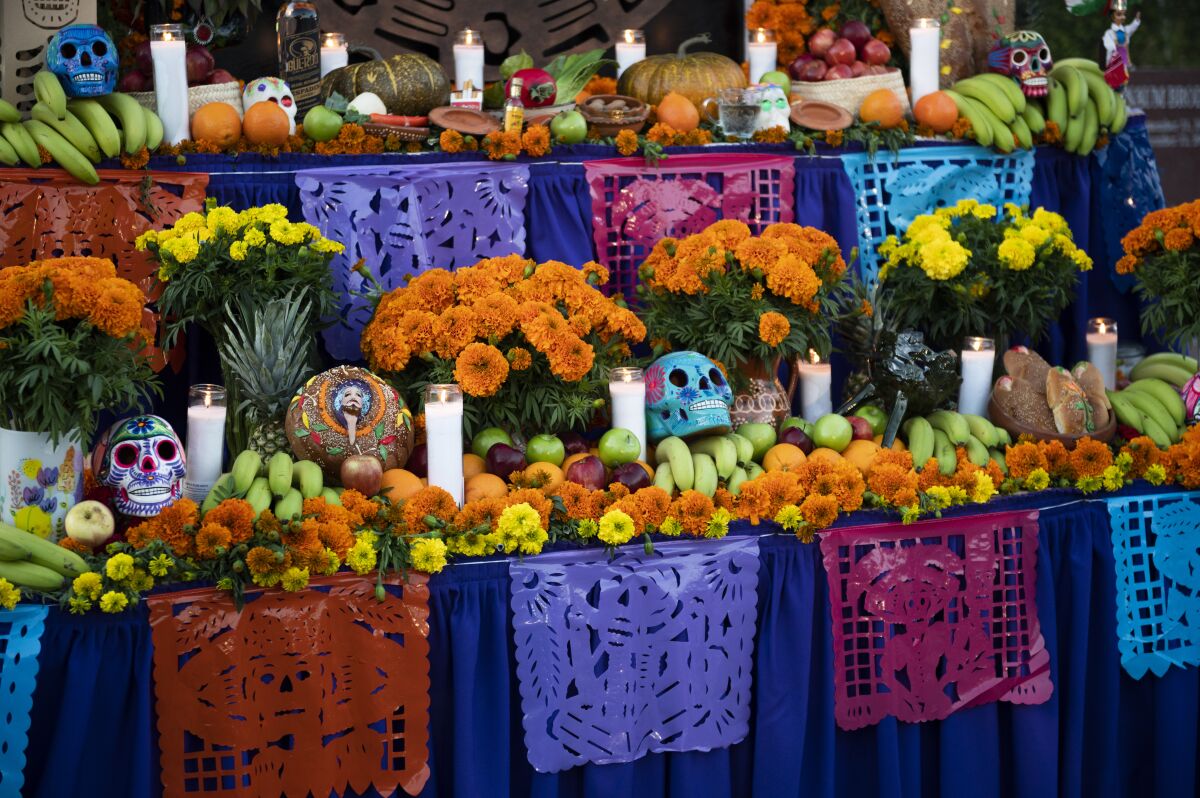Elaborate skull facepaint, crowns of flowers and feathered hats adorning women’s heads. Blasts of mariachi trumpets. Thousands of flickering candles and the scent of cinnamon lingering on street corners. Mexico’s Día de Muertos is a sensory affair, and you might be familiar with some of these evocations, but what does the country’s most famous festival really involve? And how can you experience it on the ground?
Día de Muertos can be incorporated into any list of Mexico tourist destinations provided you visit during late October and early November. A good sample itinerary would be this culinary-themed trip, which includes Oaxaca, one of main hubs for celebrations.
What is Mexico’s Día de Muertos?
Día de Muertos is different in tone, feel and meaning from Halloween, and different from how is celebrated in some English-speaking countries. Although the annual dates coincide, and death and the presence of spirits are a common theme. In Mexico, this celebration is very much a revered, even joyous household celebration.
Families come together to remember their loved ones between October 31 and November 2, and on one of these days they’ll visit the family plot at their local cemetery (dates vary according to local calendars).
The Día de Muertos comes from indigenous beliefs (including Aztec, Toltec and Maya) that held that death was only one stage in life’s long journey, and mourning the dead was therefore disrespectful. This means that is celebrated most fervently in areas of Mexico that have a particularly rich pre-Hispanic heritage.
Where’s the best place to experience this tradition in Mexico?
Oaxaca throws the showiest festivities, but this also means that its Día de Muertos has become quite commercially skewed in recent years. Plus, places to stay and guided tours book up well in advance.
If you do choose to go to Oaxaca, we’ll show you a less-overwhelming, less-mercantile side, taking you out of the city and into smaller villages. You can even be invited into people’s homes to experience the celebrations at their most authentic (more on that shortly).
Ever since James Bond donned a skeletal mask in the opening of Spectre, Mexico City has held its own Día de Muertos procession ― a slick spectacle of dance, costumery and music. It’s a head-turning sight, but there’s not much else going on in the capital to do with the festival ― though there is, of course, plenty of places of interest in the city itself, from art museums to Aztec ruins.
What can you see and do during this day?
In and around Oaxaca, you might start by visiting a local market to buy ingredients considered essential for the ofrenda, or altar, which families set up in their homes or at their relatives’ gravesides. It’s not a structure that’s intended for worship: it’s more like a portal, a temporary ‘welcome home’ gateway for the dead.
So, at a market, you and your guide might be buying items intended to feed the spirits after their long journey, such as pan de muerto. This sweet, doughy, anise-spiced bread is decorated with icing-sugar skulls, bones and teardrops. Meanwhile, vendors sell candied pumpkin mixed with cinnamon for you to eat as a street snack.
Sugar is a bit of a theme, though in Oaxaca you can also expect to eat (and to see families eating) mole, an unctuous chili-and-cocoa sauce that accompanies meats. You can find more in our blog of Mexican traditions experiences.

